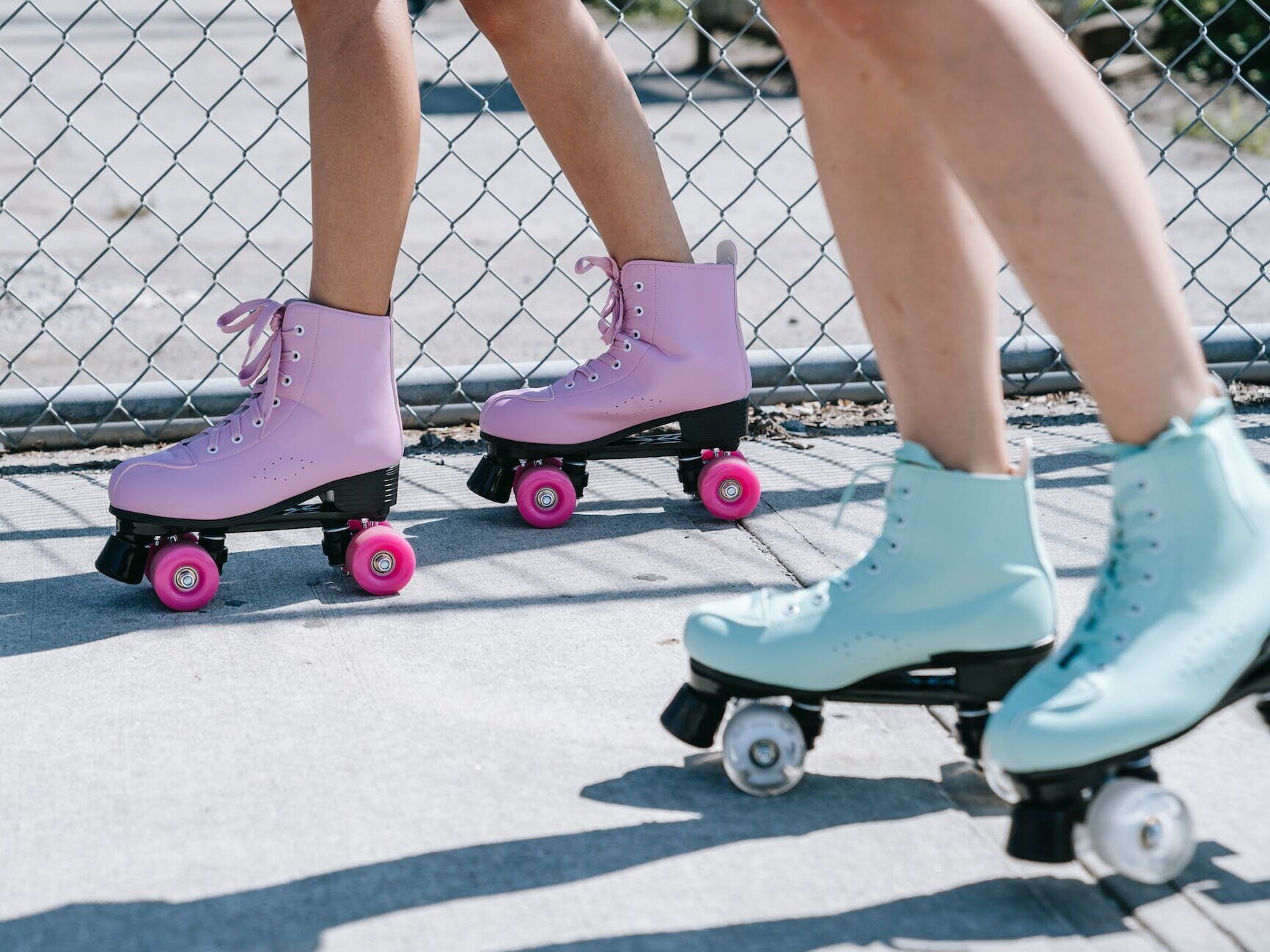Have you been looking for new ways to get outside and get active? If you’re searching for something different when it comes to cardio, roller skating may be the answer.
As someone with knee problems, I can’t go on runs. Roller skating is a great alternative because it is much easier on the knees but still allows me to get my cardio in and keep my heart healthy.
Roller skates vs. roller blades
Roller skates have four wheels arranged in a square on the bottom of each skate and a stopper in the front which serves as the brake. This is different from rollerblades or inline skates, which typically have three to five wheels arranged in a straight line. Although the two are similar, roller skates provide more knee and ankle support and are easier to balance on.
Drills for beginners
If you want to get into roller skating, start with these basic drills. You can do them inside or outside. Don’t forget to wear protective gear like wrist guards, knee pads and a helmet to make sure you stay safe.
- Balance on one foot – Balancing on one foot helps you become comfortable on your skates. Start by picking up each foot slowly and try to balance for a few seconds.
- Shifting your weight to roll – Stand in place and try shifting your weight forward to start rolling. Always keep your knees slightly bent to keep yourself grounded. Tilt your body forward to change the position of your weight, and lean into it to start rolling.
- Shuffle your feet – Shuffle your feet in place in an alternating motion, rolling one foot forward and one foot backward. Continue doing this until you feel comfortable with your feet rolling on wheels.
- Starting to skate – With your toes pointed slightly outward in a V-position, push off the ground with one foot by gently kicking backward diagonally. Then, place that foot back on the ground, and do the same with the other foot. Do this continuously, and you’ll find the rhythm. Before you know it, you’ll be skating.
- Don’t forget to brake – Skating inside can eliminate the need for using your stopper because you can grab on to nearby walls, tables and couches. However, before you start skating outside, practice using the brake. To do so, move one foot to the back and tilt the front of your skate down so the stopper drags on the floor. It may feel awkward at first because the stopper skids along the ground, but keep practicing to get the hang of it.
Feel the burn
After practicing inside, it’s time to hit the trails! Skating on trails allows you to explore the nature around you while getting in some excellent exercise.
In terms of cardio, skating will strengthen your heart muscle. I typically burn around 250 calories during 30 minutes of skating – and I skate pretty slow.
For me, roller skating is like jogging on wheels. It’s much easier on my joints than running; I never have any knee pain during or after skating, which is a huge relief.
Roller skating works your quadriceps and calf muscles because you’re constantly using your legs and your knees are bent most of the time. You’ll also feel it in your hamstrings and gluteal muscles, especially when skating uphill. Even the slightest uphill incline will make your glutes burn.
It’s not about how many times you fall…
It’s about how many times you get back up and keep practicing. Falling is why it is recommended to wear protective gear.
Falling backward is more common than falling forward, which is why wearing wrist guards and a helmet are important. Wrist guards will prevent wrist-related injuries when you fall backward and catch yourself on your hands. Keeping your knees bent and your weight slightly in front of you will help keep your core stable so you don’t lose your balance.
Practice makes (almost) perfect
With enough practice, anyone can skate! Once you feel like you’ve mastered the art of roller skating, trying out different tricks like crossovers, spins, and backward skating will keep you excited and challenged.
If you’re unable to run or just looking for a way to spice up your cardio, roller skating is your answer. Grab your headphones, lace up your skates and let the good times roll.
Related articles
Understanding Inflation and What it Means for You
Say Aloha to Hula Hoop Fitness
Explore Indoor Active Fun During the Winter Months

